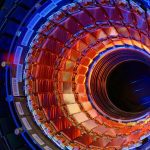Key Takeaways:
- Black holes, the cosmic anomalies that defy our understanding of physics, may be challenged by the existence of fuzzballs, introducing a paradigm shift in astrophysical theories.
- String theory, a comprehensive model of the universe, suggests that the universe’s fundamental building blocks are tiny, vibrating strings, offering a unique perspective on the nature of the cosmos.
- Fuzzballs, akin to neutron stars, emerge as a compelling alternative within string theory, providing a less intimidating explanation for the gravitational phenomena observed in the cosmos.
- The enduring information paradox linked to black holes might find resolution through the concept of fuzzballs, potentially unlocking new realms of understanding in the fundamental fabric of the universe.
- Cutting-edge instruments like the Laser Interferometer Gravitational-Wave Observatory (LIGO) and the proposed Laser Interferometer Space Antenna hold the promise of differentiating between traditional black holes and the hypothetical stringy fuzzballs, marking a revolutionary leap in our exploration of the cosmos.
Black holes stand as the most perplexing phenomena, challenging the foundations of our understanding of physics and the nature of the universe. These gravitational behemoths, where the known laws of physics seem to unravel, have intrigued scientists and cosmologists for decades. However, recent research is ushering in a radical proposition that could reshape our comprehension of these cosmic mysteries — the potential existence of fuzzballs as a revolutionary alternative to black holes.
The perplexity surrounding black holes arises from the predictions of Einstein’s theory of general relativity, where the collapse of matter into an infinitesimally small volume results in gravity overpowering other fundamental forces. This theoretical construct leads to the formation of a singularity, an infinitely tiny point surrounded by an event horizon where gravity’s pull exceeds the speed of light. Despite the theoretical challenges posed by this model, astronomers have observed celestial objects behaving as if they were black holes, adding an additional layer of complexity to the cosmic narrative.
The information paradox, first proposed by physicist Stephen Hawking in 1976, added another layer of intrigue to the black hole enigma. According to Hawking, black holes emit radiation and gradually evaporate, posing a fundamental question: What happens to the information that falls into a black hole? This longstanding mystery has fueled the search for alternative explanations, and recent research suggests that fuzzballs could hold the key to resolving this cosmic puzzle.
String theory, a comprehensive model aiming to describe the universe’s fundamental constituents, introduces the concept of tiny, vibrating strings as the building blocks of everything in existence. These strings, too small to be directly observed, form the basis of string theory, which also posits the existence of extra dimensions curled up on subatomic scales. Providing a comprehensive framework capable of explaining every particle, force, and aspect of the universe, string theory now proposes a provocative replacement for black holes — fuzzballs.
In the context of string theory, black holes are reimagined as fuzzballs — entities that are neither black nor holes but bear a striking resemblance to neutron stars. Neutron stars manifest when an object lacks the gravitational force required to collapse into a black hole. Within a neutron star, matter reaches its highest density state, with neutrons, the fundamental constituents of atoms, tightly packed together. In a fuzzball scenario, the fundamental strings cease to collaborate, clustering into a ball-like structure, hence the name fuzzball.
Despite the fascination surrounding fuzzballs, it’s essential to note that string theory lacks a complete mathematical solution, leaving the concept fuzzy not only in physical reality but also in theoretical precision. However, recent research indicates that upcoming surveys, particularly those focusing on gravitational waves, might offer insights into the existence of fuzzballs.
Current instruments such as LIGO have successfully detected gravitational waves resulting from black hole mergers, aligning with general relativity predictions. Yet, the advancement of technology promises even greater possibilities. The future holds instruments like the advanced Laser Interferometer Gravitational-Wave Observatory (LIGO) and the proposed Laser Interferometer Space Antenna, which could possess the sensitivity needed to distinguish between conventional black holes and the hypothetical fuzzballs predicted by string theory. Different models of fuzzballs predict variations in gravitational wave signatures, potentially providing a crucial avenue to either confirm or refute their existence.
The potential discovery of fuzzballs holds profound implications for our understanding of the cosmos. Moving beyond merely proving the existence of black holes, scientists are now poised to explore the intricacies of these celestial phenomena. If evidence for fuzzballs emerges, it would not only redefine our perception of black holes but also unravel some of the deepest mysteries underlying the nature of the universe. The exploration of fuzzballs represents a new chapter in our cosmic journey, promising to unveil unprecedented insights into the fabric of the cosmos itself, ushering in a revolutionary paradigm shift in our understanding of the cosmic order.


